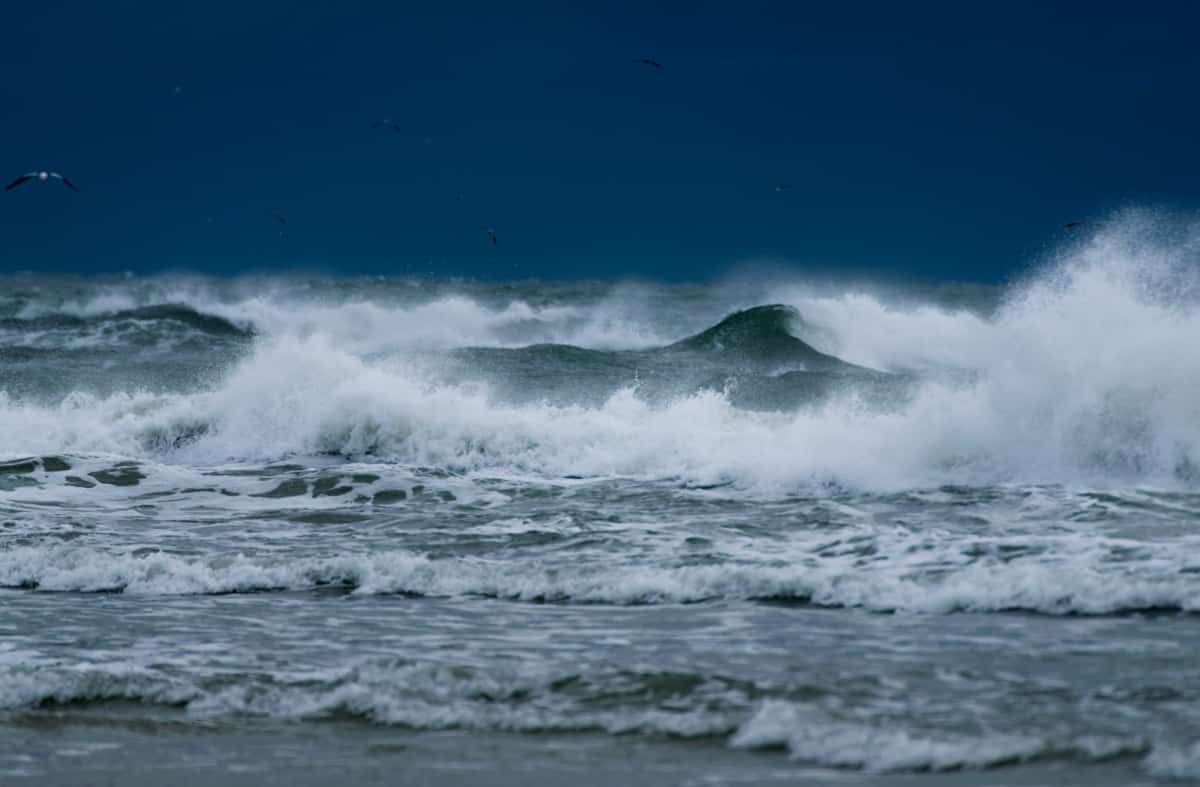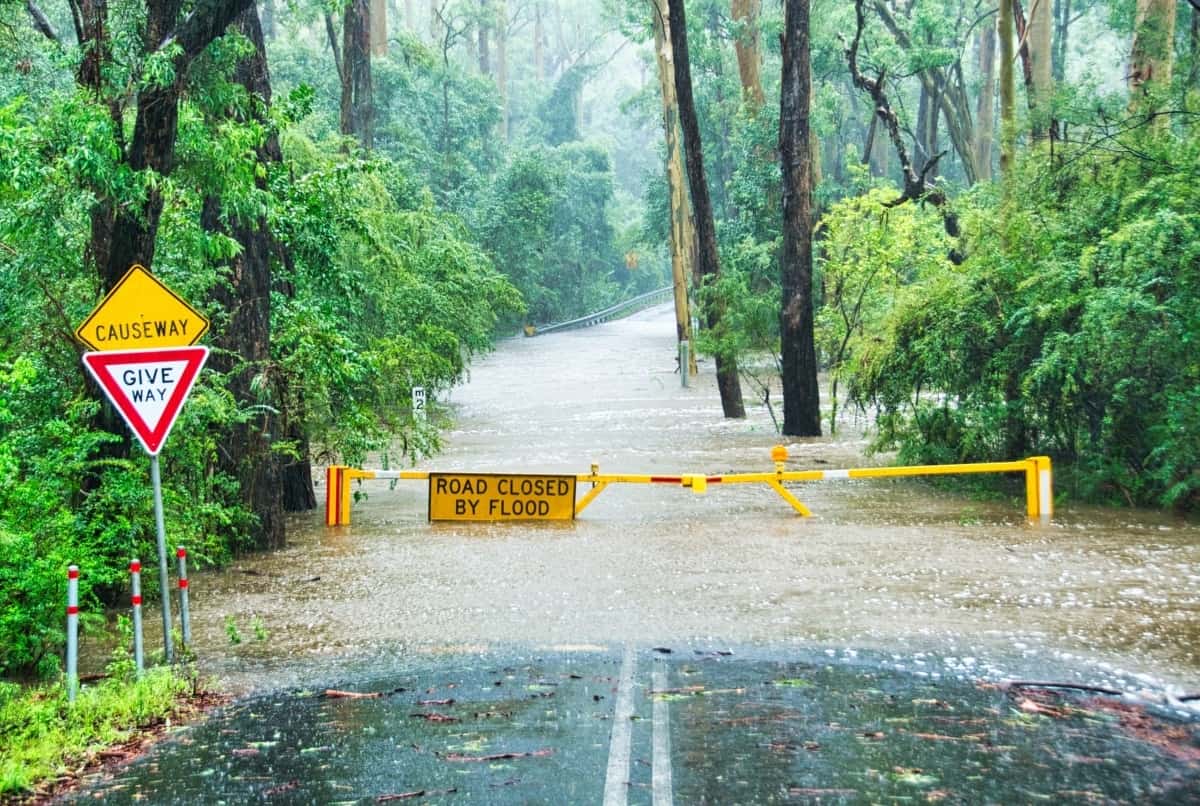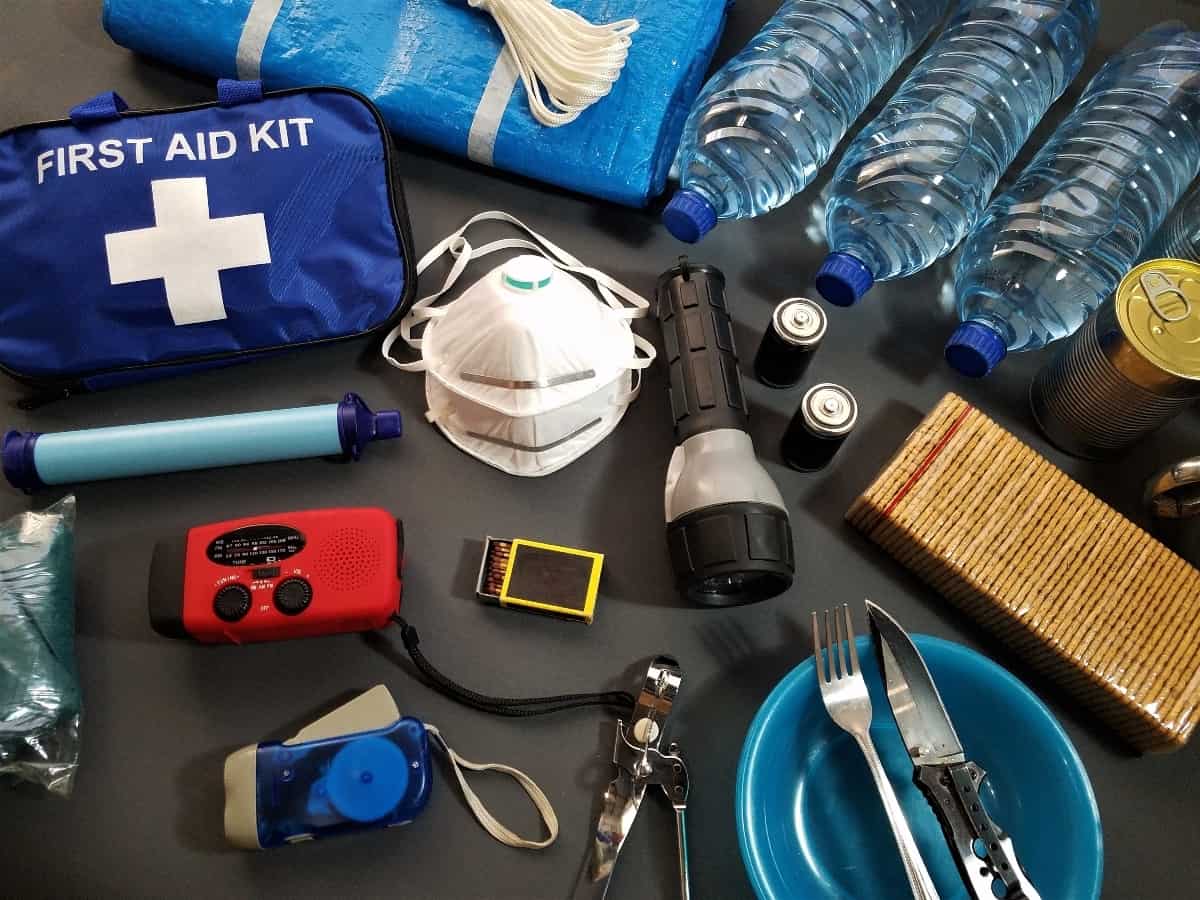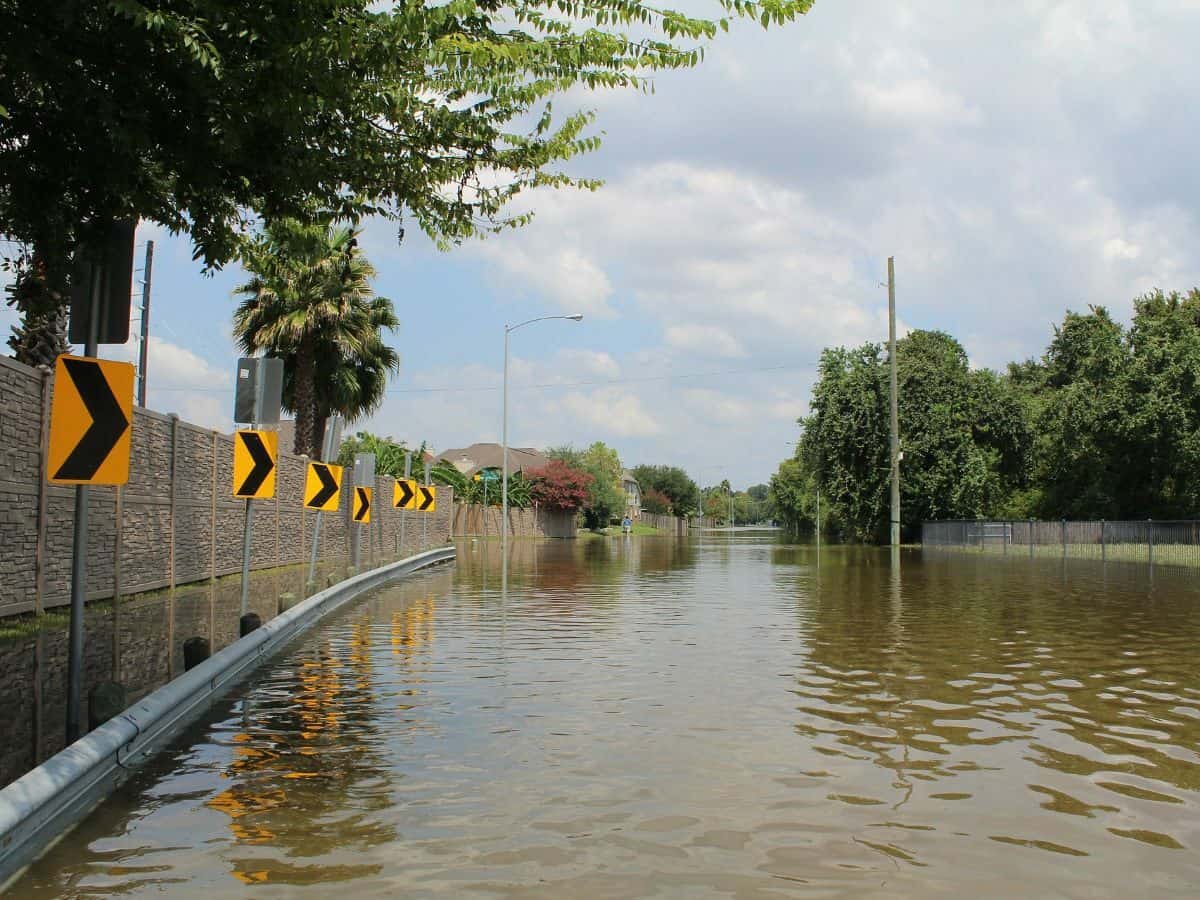When it comes to tropical storm vs hurricane weather, do you know the difference between the two? With meteorology information so readily available at our fingertips, it can become a wealth of information regarding our day to day weather radars. But, with the frequent updates and terminology thrown around, it’s important to take the time to understand the difference between tropical storm vs hurricane to make sure you know how to best prepare your family.
What is a Tropical Storm?
A tropical storm is a rotating low pressure weather system that originates over the warm tropical oceans. A tropical storm has surface winds between 39 to 73 mph, and can range from loosely organized thunderstorms and depressions to intense cyclones. There are varying levels of tropical storms, all due to their severity.
Tropical storms can occur in any of the Earth’s ocean basins where tropical cyclones are found. This includes the northeast Pacific, central Pacific, northwest and southwest Pacific, north Atlantic, and Indian oceans.

How are Tropical Storms Formed?
These are generally formed in the warm ocean waters closer to the equator. As warm and moist air rises over the ocean, there is less oxygen and lowering the air pressure below. Then, the air surrounding the high pressure pushes into the warm pressure, creating air swirls. When the warm moist air rises and cools off, the water in the air forms clouds. The system of clouds and winds grows and spins, all fed by the ocean’s heat and water that’s evaporating from the surface.
As the storm’s rotation grows and becomes quicker, an eye forms in the center of the storm. The eye of the storm is known to be calm and clear, with low air pressure. Storms that form north of the equator spin counterclockwise, while storms that form south of the equator spin clockwise. This is due to the Earth’s rotation.
Levels of Storms
There are different factors that lead to a classification of a tropical disturbance. Here are the classifications of tropical disturbances, as outlined by the National Weather Service:
- Tropical Wave: These are also called easterly waves. This consists of an inverted trough of low pressure moving east to west across the tropic. A tropical wave has the ability to lead to a tropical cyclone.
- Tropical Disturbance: A disturbance originates in the tropics or subtropics and has a 100 to 300 mile diameter and a deep convection.
- Tropical Cyclone: A tropical cyclone is a low pressure system that develops over tropical or subtropical waters with an organized deep convection and a well-defined center.
- Extratropical Cyclone: A cyclone of varying intensities, where the primary energy source results from warm and cold air mass temperature contrasts
- Post Tropical Cycle: a cyclone that does not possess sufficient characteristics to move forward as a tropical cyclone. They can continue to have powerful winds and heavy rainfall, but they won’t progress further than that.
- Remnant Low: Taps out at a maximum wind speed of less than 34 knots and no longer possesses the convective organization that would classify it as a tropical cyclone.
- Subtropical Cyclone: A low pressure, non-frontal system with characteristics of both tropical and extratropical cyclones.
- Tropical Depression: This is a tropical cyclone with maximum sustained winds of 33 miles per hour (mph) or less.
- Tropical Storm: This is a tropical cyclone with sustained surface winds ranging between 39 to 73 mph.
- Hurricane: A tropical storm becomes a hurricane when the sustained surface winds are 74mph or greater.
Tropical Storm Watch
Do you know the difference between a watch and a warning? A tropical storm watch allows citizens to know that there’s a probability that they will experience a tropical storm cyclone in their geographic area. A watch is issued 48 hours before strong winds, coastal and/or river flooding, or storm surge begins.
Tropical Storm Warning
Meanwhile, a tropical storm warning lets citizens know that the tropical cyclone is expected in 36 hours or less. This has the same associations as a watch, but just with less time before landfall. Strong winds are also associated with storm surges, coastal and/or river flooding.

What is a Hurricane?
A hurricane happens when the tropical storm’s sustained surface winds are greater than 74mph. From there, the hurricane is separated into categories, from Category One to Category Five.
Hurricane Categories
The Saffir-Simpson Hurricane Wind Scale rates the hurricane on a scale of one to five, depending on the sustained wind speeds. The higher the category, the more damage the hurricane can cause.
Category One Hurricane
A category one hurricane has wind speeds between 74 and 95mph. These hurricanes produce some damage to the affected areas. Common property damage of a category one hurricane include damages to the roof, shingles, vinyl siding and gutters. Additionally, category one hurricanes can cause damage to trees. Both large branches and shallow rooted trees can be damaged during the hurricane. Additionally, these hurricanes cause damage to power lines and poles, leading to power outages.
Category Two Hurricane
A category two hurricane has sustained wind speeds between 96 and 110 mph. Homes with well constructed frames can still sustain major roof and siding damage. Additionally, near total power loss is expected with long outage dates. Shallow rooted trees can snap or totally uproot, causing damage to streets and homes.
Category Three Hurricane
The average winds during a category three hurricane top out between 111-129 mph. During this category, devastating damage can occur. Well built homes can receive significant damage through removing roofs, decks, or damage from trees that are uprooted. Electricity and clean water are not readily available, and can be out until the storm has passed.
Category Four Hurricane
During category four hurricanes, affected areas can expect catastrophic damage and winds from 130 to 156 mph. Homes sustain severe damage, with the potential to lose the roof structure and exterior walls. With downed trees and powerlines, residents can expect power outages to last a sustained period of time.
Category Five Hurricane
The highest category of a hurricane is category five with wind speeds over 157 mph. In these situations, there is the opportunity for catastrophic damage, with homes destroyed, total roof failure, and wall collapses. Additionally, power outages can last for weeks or months. Most famously, Hurricane Katrina was classified as category five hurricane two hours before hitting the Gulf coast. After initially making landfall in Florida as a category two hurricane, the warm waters in the Gulf intensified the hurricane, creating the sixth most powerful hurricane created in the Atlantic. With the failed levees, power outages, and dangerous flooding, Hurricane Katrina claimed 1,833 lives and cost approximately $170 billion in damages.
Hurricane Watch
Do you know the difference between a hurricane watch and a hurricane warning? A hurricane watch is issued when the hurricane conditions are possible within a specific region. A watch is issued 48 hours in advance of landfall, giving citizens the opportunity to stock up groceries, make necessary preparations, watch the news or evacuate.
Hurricane Warning
However, a hurricane warning indicates that the conditions are expected within the warned area. This is issued 36 hours in advance of landfall, making sure that the affected area has enough time for important preparations.
The Difference Between Tropical Storm vs Hurricane
The difference between tropical storm vs hurricane just comes down to the sustained wind speed. The key number to remember is 74 mph. Below 74 mph, it’s a tropical storm. Above 74 mph, it’s a hurricane.
It’s important to remember that a tropical storm has the ability to become a hurricane, while a hurricane also has the ability to slow down and turn into a tropical storm again. Everything comes down to wind speeds, so if a hurricane loses its momentum while approaching the coast, it has the full potential to downgrade back into a tropical storm.
With tropical storm vs hurricane, it’s always important to recognize any potential danger that comes with the power of the storm. Never underestimate nature and proceed with caution. Whether you’re setting yourself up to potentially be stuck in your house for a few days or making a full evacuation, follow all advice given on the news through specialized professionals.

How to Prepare for a Tropical Storm vs Hurricane
Staying safe during a tropical storm vs hurricane is key. There are a few different ways to properly prepare for a tropical storm vs hurricane, given by the Center for Disease Control and Prevention (CDC).
Have an Action Plan and Emergency Supplies Ready to Go
With hurricane season starting between May 15 (north Pacific) and June 1 (Atlantic and Caribbean) and ending on November 30, you have plenty of time to create a plan to keep you and your family safe. Here are some important things to keep in mind with creating a plan for the future, and emergency supplies to keep on hand.
- Have a list of important and emergency numbers. Keep them near your phones, have them loaded into your cell phones, and on your refrigerator.
- Know where the nearest shelter is in relation to your household. Keep in mind that there is the potential for downed power lines and trees, so have different routes you can take in the event that you cannot access it from one route.
- Create an emergency food and water supply. Typically, you’ll want to have at least three days worth of food and water on hand and a gallon of water per day per person and pet. In the event it’s a hot climate or you have someone in the family that is pregnant, consider having more water than this. Ideally, try to have up to a two week supply of water if possible.
- Have an emergency medicine supply.
- Ensure that you have emergency power sources, like flashlights, with extra batteries.
- Safety and personal items. This includes soap, hand sanitizer, toothbrushes, toothpaste, glasses/contacts, and other important items.
- Know where your important documents are. This includes medical documents, wills, passports, and any identification.
- Ensure that you have a fire extinguisher and that everyone in the household knows where it is and how to use it.
How to Secure Your Home, Families, and Pets
Families
The next step in preparation is to go over everything in the above section of your emergency plan and information with your family. Everyone needs to be on the same page and have a firm understanding of what to do in the event of an emergency. Make sure to keep the television, radio, or online applications open with frequent updates of the storm. Do this in the case that the storm progresses and you need to evacuate.
Pets
Make sure to have a plan for your animal as well. Remember that leaving them behind while you evacuate is not fair or safe to the animal. They are part of your family, so treat them with the same respect. If you have a pet, identify different shelters, hotels that are pet friendly, or an out of town family member or friend where you can take your animal in the event you need to evacuate. If you don’t know where to start finding this information, your local animal shelter could have advice or additional information to aid you in keeping your furry friend safe.
Home
For your home, make sure to do the following tasks to keep it as safe as possible:
- Clean your yard to remove any items that the wind could pick up and blow around. This includes bikes, furniture, grills, tanks, and any building materials that are outside.
- Cover windows and doors with storm shutters or pieces of plywood. This keeps you safe in the event that the window shatters, making sure you are not injured from flying glass.
- If you see flooding or downed power lines, make sure to turn off your power. Additionally, if you are evacuating, turn your power off.
- Fill any clean water containers with drinking water. This is just in case you lose some of your water supply during the storm. It’s also a good idea to fill up sinks and bathtubs with water for washing.
- Make sure your carbon monoxide (CO) detector is charged to prevent CO poisoning.
Other Important Factors to Consider
Something else to consider beforehand is your escape route in case of an emergency evacuation. It’s a great idea to fill your car’s gas tank prior to the storm hitting, load your car with an emergency kit, pack maps, and keep them under cover. If you do not have a car, make plans with family or friends in case of an emergency evacuation. Additionally, call authorities to find out how to get transportation out in case you need to evacuate. Typically, cities have busses to help make sure that everyone gets out of harm’s way.
For other information regarding hurricane season preparedness, visit our guide that explains everything you need to know about the hurricane season. We break down upcoming storms, information, and how to keep your loved ones safe.




